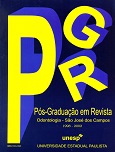Utilização de implante homógeno de matriz óssea, na reconstrução do assoalho orbitário. Análise histomorfológica em ratos
DOI:
https://doi.org/10.14295/bds.2001.v4i2.122Abstract
O presente estudo avaliou, histologicamente, a utilização de implantes homógenos de matriz óssea na reconstrução do assoalho orbitário. Foram utilizados 22 ratos (Rattus, norvegicus, albinus, Wistar), sendo que quatro (4) constituíram o grupo de animais doadores da matriz óssea e o restante (18), formaram um único grupo. O lado direito (lado tratado) de cada animal recebeu implante ósseo e o lado esquerdo (lado controle) não recebeu qualquer tipo material, apenas o preparo do leito receptor simulando clinicamente, a perda de substância óssea após fratura cominutiva do assoalho e rebordo infra-orbitário. Foram sacrificados seis (6) animais, nos tempos pós-operatórios de 10, 25 e 45 dias. Após observação e discussão dos resultados, pôdese concluir que o processo de reparo no lado controle finalizou com neoformação óssea aos 45 dias; não houve processo intenso de reabsorção dos implantes de matriz óssea desmineralizada nos períodos estudados; ocorreu precoce proliferação conjuntiva e ossificação junto às matrizes implantadas.
Downloads
Downloads
Published
How to Cite
Issue
Section
License
Brazilian Dental Science uses the Creative Commons (CC-BY 4.0) license, thus preserving the integrity of articles in an open access environment. The journal allows the author to retain publishing rights without restrictions.
=================




























